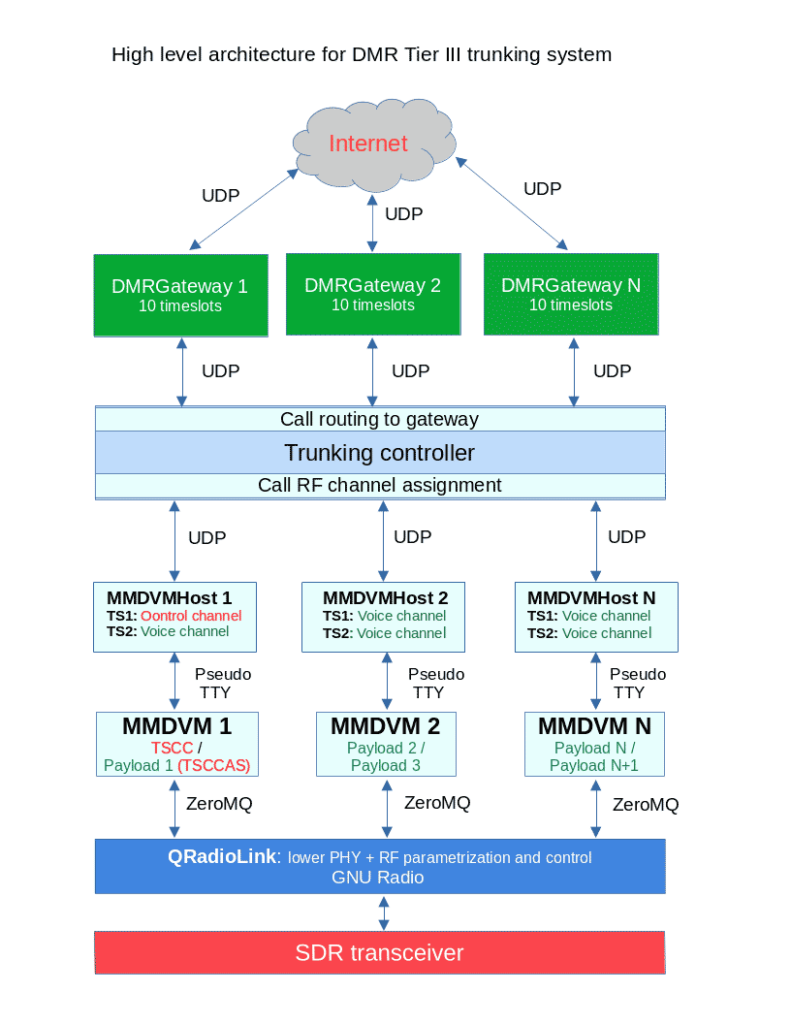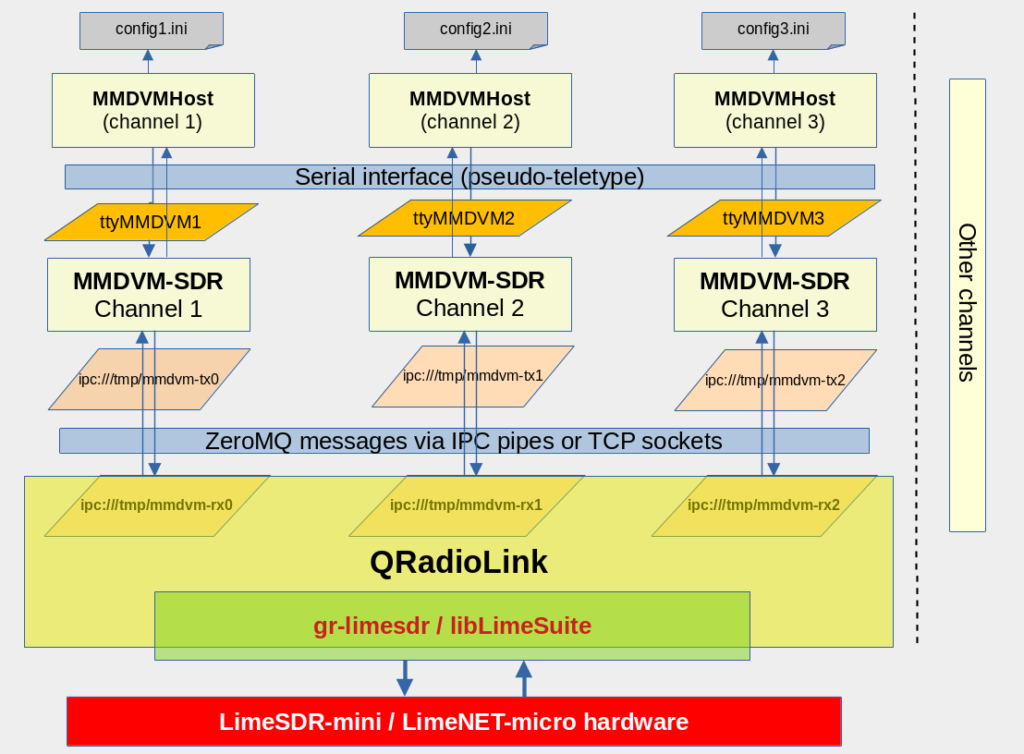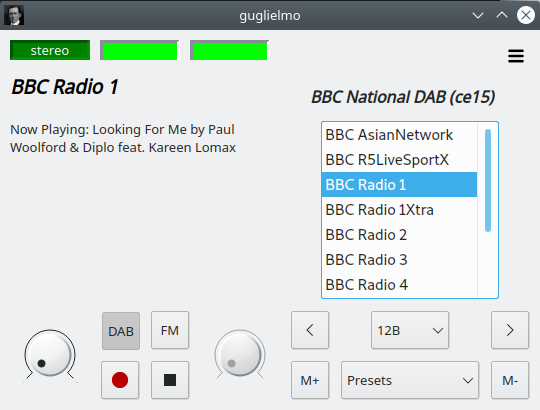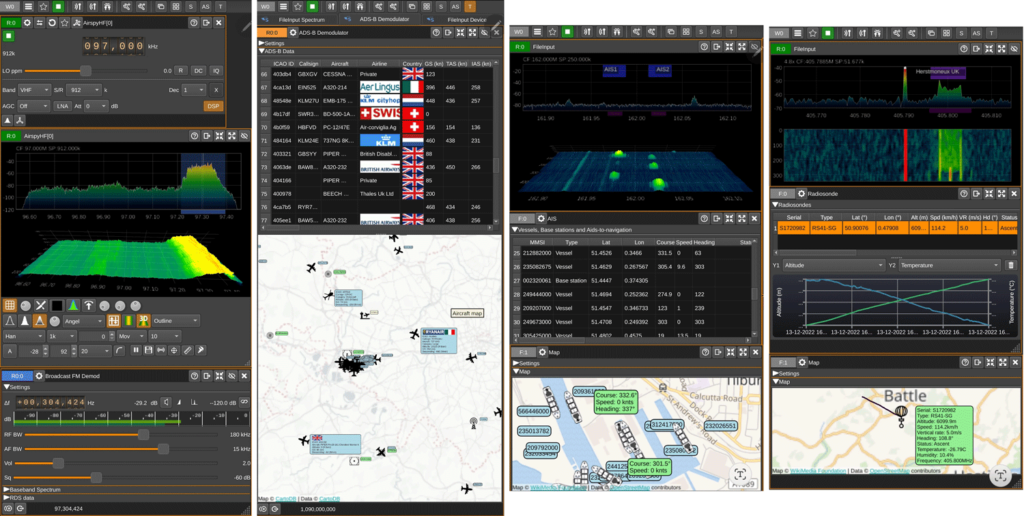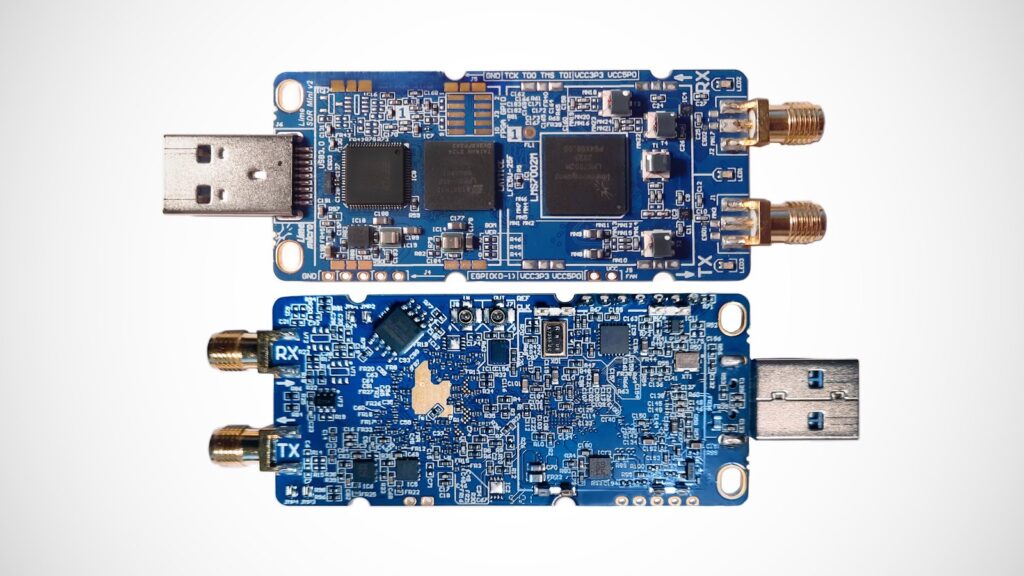Monitoring Aircraft Distance Measuring Equipment (DME) with LimeSDR
Daniel Estévez has recently posted on his blog about how he uses a LimeSDR to record and analyze the DME signal used by aircraft. DME or Distance Monitoring Equipment is a radio navigation technique sometimes used by aircraft.
The concept behind DME is simple: the aircraft broadcasts a signal pulse, and a ground station receives and repeats the pulse back at another frequency. The aircraft receives the return pulse, and from the time it has taken to receive that return pulse, the distance to the ground station can be determined. The frequencies used are between 960 MHz and 1215 MHz, and the aircraft and ground station pulses are always spaced apart by 63 MHz.
In his post, Daniel explains how he records the two signals spaced 63 MHz apart using his LimeSDR. Recording this large bandwidth has some challenges since typically the LimeSDR only supports a bandwidth of 61.44 MHz, which is too small for the 63 MHz spacing. However, Daniel explains in his post how he got around this limitation by using the two RX channels on the LimeSDR, sampling at a higher 80 MSPS sample rate, and then using the LimeSDR DSP to downconvert and decimate each DME channel to 2.5 MSPS, making the final sample rate small enough to be sent over USB.
The rest of the post details his experiments, analysis, and results when receiving the two DME channels through GNU Radio.

